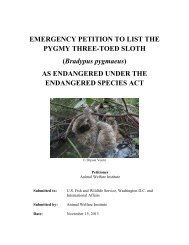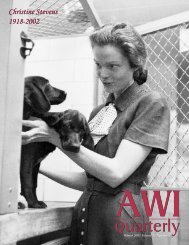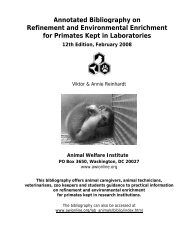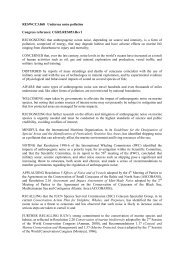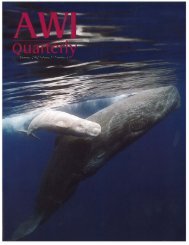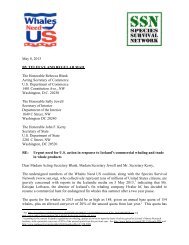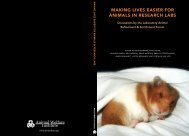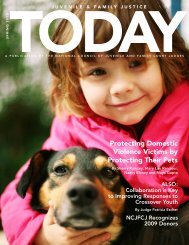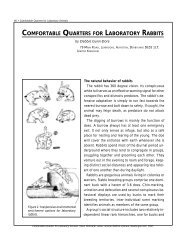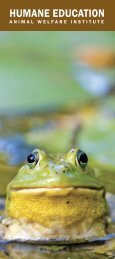A Common Bond - The National Link Coalition
A Common Bond - The National Link Coalition
A Common Bond - The National Link Coalition
- No tags were found...
You also want an ePaper? Increase the reach of your titles
YUMPU automatically turns print PDFs into web optimized ePapers that Google loves.
Chapter 3:Employ Animal-Focused Interventions for Child Victims, Children Who Abuse, and At-Risk ChildrenClinical Assessment of Juvenile Animal Cruelty provides a comprehensivechild and family interview form and other useful tools. For example, thehandbook includes checklists that help determine the presence of resiliencyfactors in children, as well as their readiness for change. Most useful,perhaps, is the Screening and Referral Tool, which categorizes the abuseinto three categories (mild, moderate, and severe) and recommends typesof intervention for each (e.g., reinforce and support parents in limit-setting,parental counseling, and police involvement) (Zimmerman & Lewchanin,2000).Guideline 6Use appropriate treatment approaches for childrenwho abuse animals or who have witnessed animalabuse.Until recently, many clinicians viewed animal abuse more as a symptomthan a behavior to be treated directly. Cruelty to animals was not added tothe list of indicators for a diagnosis of conduct disorder in the Diagnosticand Statistical Manual of Mental Disorders until 1987 (DSM-III-R). However,in the past 10 years or so, authoritative research findings that point out thelink between animal abuse and human violence have been more widelydisseminated to professional audiences and the public.One result of this knowledge is that at least 28 states now have provisionsin their animal anti-cruelty laws that either recommend or mandatecounseling for youthful offenders. Despite this recognition by the statelegislatures of the need for counseling programs, at this time there is onlyone published treatment program for children who either perpetrate orwitness animal abuse, AniCare Child (Randour et al., 2001). Developed bythe Animals and Society Institute, AniCare Child offers practical assessmentand treatment strategies for counselors and others working with at-riskchildren and children identified as engaging in animal cruelty. It focuses ontwo goals of treatment—the development of self-management skills andthe development of empathy—by providing exercises, projective materials,and clinical case examples. In addition to its use with identified and at-riskchildren, the AniCare Child approach encourages all professionals workingwith children and families to make assessments of a child’s and family’srelationship to animals a routine part of any formal or informal evaluation,just as questions of substance abuse and family violence are routinelyincluded in screenings of children and families. (For more information aboutAniCare Child, contact the Society & Animals Forum atwww.societyandanimalsforum.org.)22



